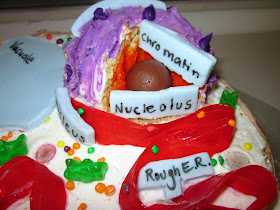I recently received a comment (that I did not post on my blog) about my recent post that was entitled
"Teaching Earth Science and Hydraulic Fracturing".
The comment read
"Do you teach your students to look at both sides of an issue?" and provided a link to a rebuttal "movie" to the
Gasland film. I didn't watch the rebuttal.
I never click on links that I'm not sure of, and I sure as heck don't post comments from anonymous people on my blog. If you have a comment worthwhile to post, you have an identity, or at the very least a profile that would allow contacting you for intelligent dialogue. I love debates!
If you'd like to have a debate in your class on hydraulic fracturing,
try this fantastic point/counterpoint article "Should Fracking Stop?: Extracting gas from shale increases the availability of this resource, but the health and environmental risks may be too high
. It was published in the peer-reviewed journal "Nature". It is a good guideline for concepts, ideas, good science and a bibliography of resources for older students.
I'll answer that question anyway. "Do I teach my students to look at both sides of an issue?". Yes, I do. Teaching students to absorb facts without encouraging and nurturing their critical thinking skills is useless and can be downright harmful--especially in the age of the Internet, the tabloid press and political ads.
I do not teach "anti-natural gas harvest" rhetoric. Educational studies have shown that when a teacher uses the kind of teaching techniques that would allow heavy inserting of his/her own ideals into discussion that it inhibits critical thinking (Kimbrough, 2007; Oliver and Lalik, 2004). This is not good teaching.
Harvesting our country's natural resources and being ecologically responsible are not mutually exclusive activities.
It is exactly that mindset that has politicized environmental care and stewardship from the start. There is nothing political about it. Humans will not survive if we carpet-bomb the atmosphere and poison our water sources. So I encourage my students, their parents, my friends and family and my readers (that's you) to contact their congresspeople and tell them what they think of it all.
I am a scientist and a teacher. I teach my students to look at all available (reliable) data and then to come up with solutions, ideas, causes and relationships and then to test again. I also teach them that ANYTHING is possible. Even hydraulic fracturing without chemicals that destroy aquifers and make residential and farmlands uninhabitable.























